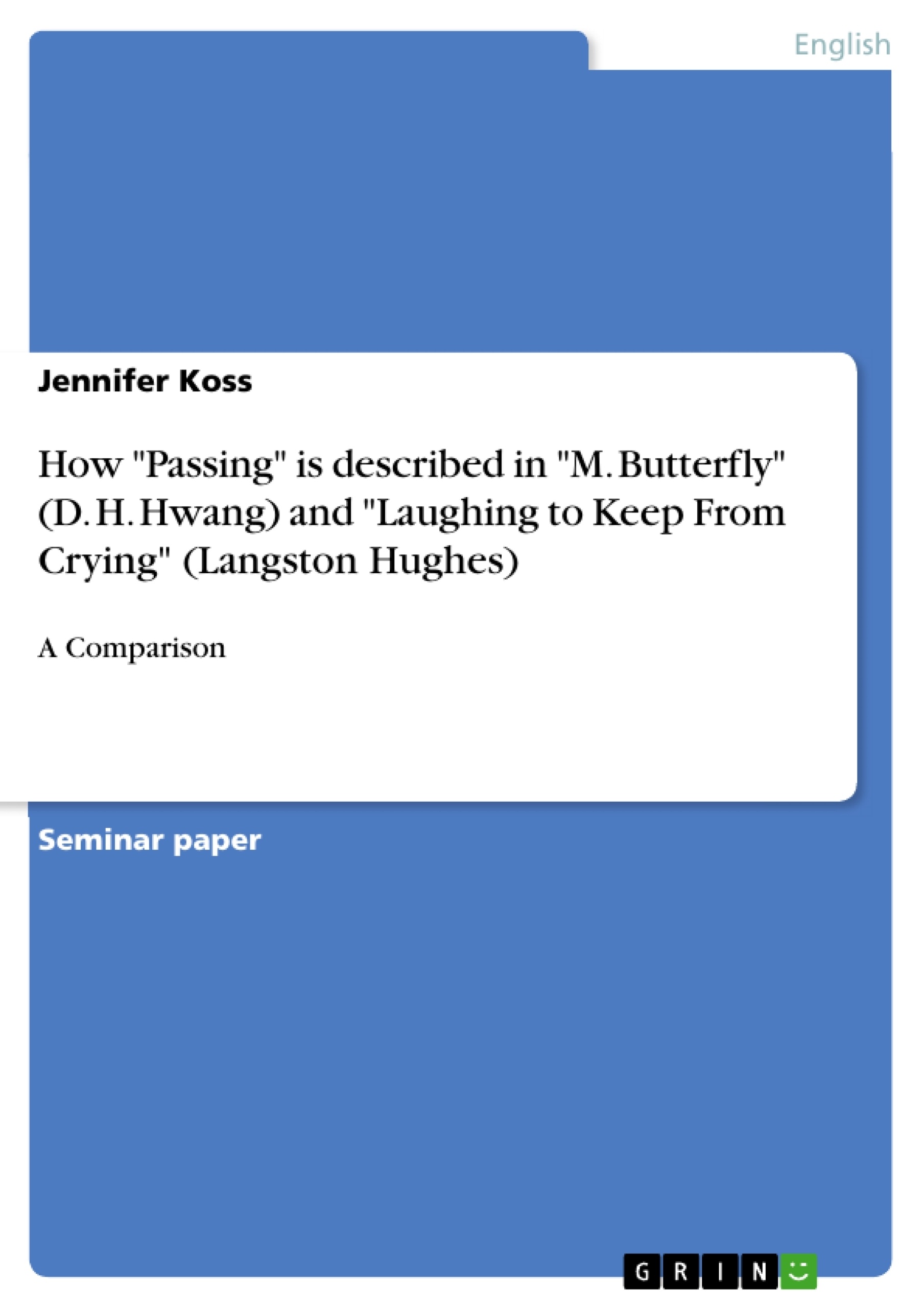1. M. Butterfly - Introduction to the Text
The play M.Butterfly by David Henry Hwang is a post-colonial story, based on a true story of a French diplomat, called Rene Gallimard in the play, who had a twenty-year affair with a Chinese actor and opera singer, namely Song Liling, not realizing that his partner was in fact a man passing as a woman. The diplomat actually became aware of the deception in 1986, when he was charged by the French government with disloyalty; it turned out that his companion had been an agent for the Chinese government, and had passed on sensitive political information that he had acquired from Gallimard.
Inhaltsverzeichnis (Table of Contents)
- M. Butterfly - Introduction to the Text
- Laughing to Keep From Crying - Introduction to the Text
- Comparison of the Two Texts
Zielsetzung und Themenschwerpunkte (Objectives and Key Themes)
This essay compares the depictions of "passing" in David Henry Hwang's play M. Butterfly and Langston Hughes's short story Laughing to Keep From Crying. It examines how the concept of "passing" is presented in both texts, highlighting similarities and differences between them.
- The nature of “passing” as a performance of identity
- The motivations behind “passing” in both texts
- The consequences of "passing" for both the individual and society
- The interplay of gender and race in shaping the experience of "passing"
Zusammenfassung der Kapitel (Chapter Summaries)
The first chapter introduces the play M. Butterfly and its premise, focusing on the protagonist Rene Gallimard's relationship with the Chinese opera singer Song Liling. This chapter explores the play's post-colonial context and its critique of Orientalist stereotypes. The second chapter introduces Langston Hughes's short story Laughing to Keep From Crying, exploring the narrator's encounter with a white couple who "pass" as black for amusement. This chapter discusses the themes of racial passing, social dynamics, and identity construction. The third chapter compares the two texts, focusing on the ways in which “passing” is depicted in both. The chapter highlights the different motivations and consequences of "passing" in each text, particularly with regards to gender passing in M. Butterfly and racial passing in Laughing to Keep From Crying.
Schlüsselwörter (Keywords)
This essay explores the concept of "passing" in literature, focusing on the works of David Henry Hwang and Langston Hughes. Key themes include gender passing, racial passing, identity performance, cultural stereotypes, and the complexities of individual and social dynamics within the context of "passing".
- Quote paper
- Jennifer Koss (Author), 2007, How "Passing" is described in "M. Butterfly" (D. H. Hwang) and "Laughing to Keep From Crying" (Langston Hughes), Munich, GRIN Verlag, https://www.grin.com/document/148932



